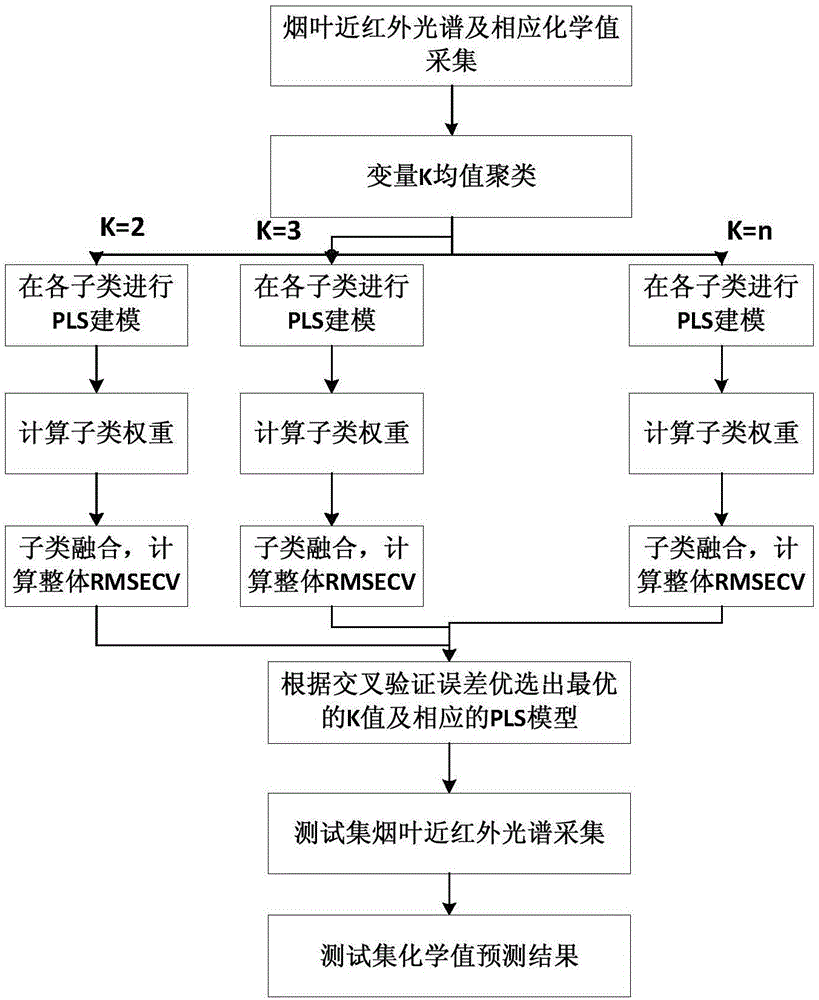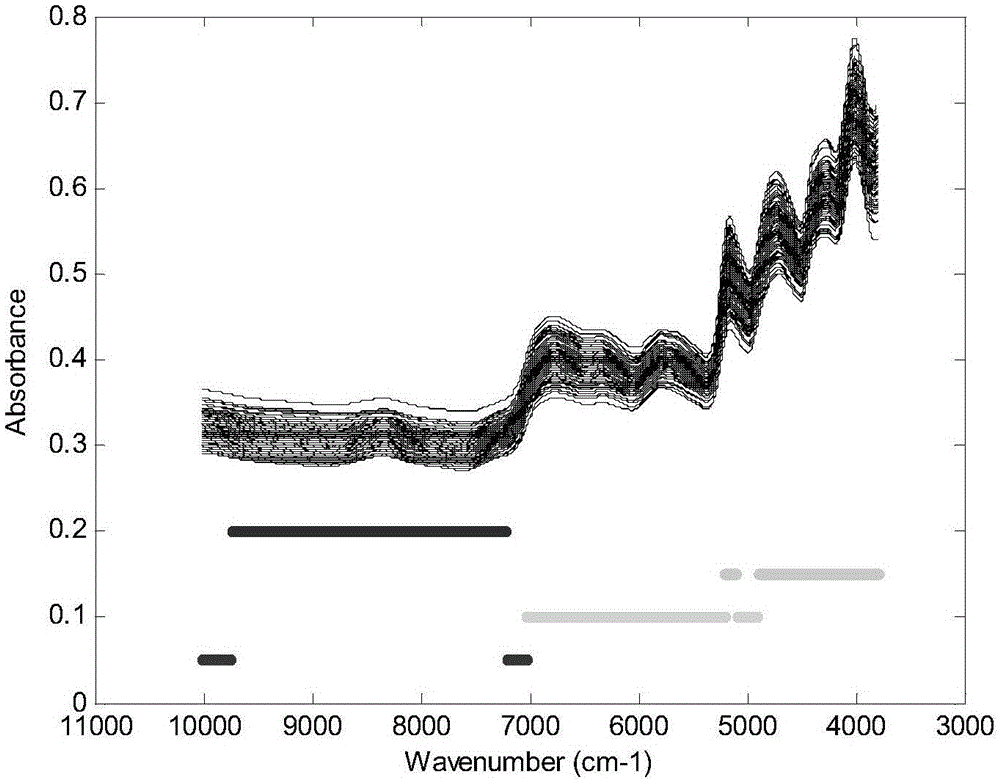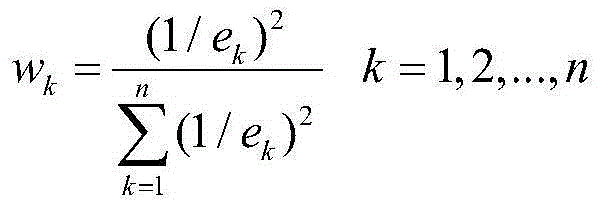Tobacco chemical value quantifying method based on near-infrared spectrum wave number K-means clustering
A near-infrared spectrum and K-means technology, which is applied in electrical digital data processing, special data processing applications, instruments, etc., can solve the problem of weak spectral noise suppression ability, insufficient effective information mining ability, model prediction accuracy and interpretation ability. Optimum and other problems to achieve the effect of improving prediction accuracy and interpretation ability and reducing prediction error
- Summary
- Abstract
- Description
- Claims
- Application Information
AI Technical Summary
Problems solved by technology
Method used
Image
Examples
Embodiment Construction
[0033] The method for quantifying tobacco chemical values based on near-infrared spectral wavenumber K-means clustering of the present invention will be described in detail below in conjunction with the accompanying drawings.
[0034] Such as figure 1 As shown, a tobacco chemical value quantitative method based on near-infrared spectral wavenumber K-means clustering comprises the following steps:
[0035] (1) Establish a training set and a test set, collect the near-infrared spectra of all tobacco samples in the training set, and measure the target component content of each tobacco sample in the training set.
[0036] Select 93 flue-cured tobacco samples from 9 provinces including Yunnan, Hunan, Hubei, Shandong, Fujian and Henan in 2011 (varieties include NC55, K326, Yunyan 85, Yunyan 87, Yunyan 97 and CB1, grades include B1F , B2F, C1F, C2F, C3F, X1F and X2F), placed in an oven, dried at 40°C for 4h, ground through a 40-mesh sieve, sealed and balanced for 1d, and then meas...
PUM
 Login to View More
Login to View More Abstract
Description
Claims
Application Information
 Login to View More
Login to View More - R&D
- Intellectual Property
- Life Sciences
- Materials
- Tech Scout
- Unparalleled Data Quality
- Higher Quality Content
- 60% Fewer Hallucinations
Browse by: Latest US Patents, China's latest patents, Technical Efficacy Thesaurus, Application Domain, Technology Topic, Popular Technical Reports.
© 2025 PatSnap. All rights reserved.Legal|Privacy policy|Modern Slavery Act Transparency Statement|Sitemap|About US| Contact US: help@patsnap.com



